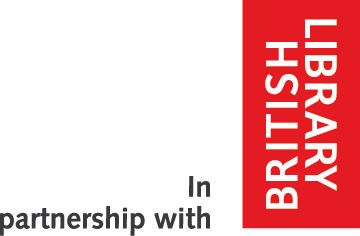British India Office Births & Baptisms
Find the births and baptisms of ancestors who lived or worked in India and other territories administered by the India office (Pakistan, Burma, Bangladesh, St Helena, Sumatra, Aden, Penang, Macao). Discover where and when they were born and baptized as well as other useful biographical information.
See description
Find the births and baptisms of ancestors who lived or worked in India and other territories administered by the India office (Pakistan, Burma, Bangladesh, St Helena, Sumatra, Aden, Penang, Macao). Discover where and when they were born and baptized as well as other useful biographical information.
Learn about these records
The amount of information you can discover can vary, but the British India Office birth and baptism records usually include a combination of the following information about your ancestors:
Birth and baptism details
-
Name
-
Date of birth
-
Place of birth
-
Date of baptism
-
Place of baptism
-
Officiating minister
-
Godparents’ names (occasionally)
Biographical information
-
Parents’ names
-
Father’s occupation
-
Nationality
-
Religion
-
Date of registration
-
Details of application and acceptance into the East India Company (cadet papers and petitions)
-
Occupation within the Civil Service/East India Company
The collection is made up of two different record sets, the British Library’s British in India Collection and transcriptions licensed from FIBIS (Families in British India Society).
Most records from the British in India Collection include an image and a transcript of the original document.
FIBIS records include a transcript only.
-
Over 700,000 births and baptisms are recorded.
-
The records consist of a number of different documents; ecclesiastic returns, East India Company writers’ petitions, birth and baptismal certificates in cadet papers, all presidency baptisms, Madras Chaplains’ Stations and Sundry Bengal baptisms, and cadet patrons & allocation 1825.
-
The ecclesiastical returns are contemporary copies of registers of baptisms, marriages and burials sent to London for the information of the East India Company and the India Office. The practice was begun by the chaplains of the East India Company's principal settlements and became a regular feature of the British administration in India.
-
The records relate almost entirely to European and Eurasian Christians; few local converts are included. It is thought that roughly seventy five per cent of the information recorded in India was sent to London.
-
The ecclesiastical returns include people from all walks of life: civil servants, army and navy personnel, medical officers, scientists, business people, traders, travellers, missionaries.
-
Birth registers are not as common, as the registration of births was not compulsory and very few are entered in the records. Registrations do not generally appear until the 1920s. Entries show date and place of birth, child's name, parents' names and their nationality and religion, father's occupation, date of registration.
-
Civil Service records in the birth and baptism records contain the details of Civil Engineers, candidates for the Indian Telegraph Department, candidates for the Public Works Department and Indian Forest Service, surgeons, assistant surgeons and candidates for the Indian Medical Service. Their application papers often contain details of their birth or baptism.
-
After 1714, civil servants were appointed to overseas posts by an elaborate system of patronage exercised by members of the East India Company Court of Directors. Candidates, who were first nominated by a director upon recommendation of some mutual acquaintance or from personal knowledge, submitted autograph petitions for employment to the court. Upon appointment, they entered into a bond with two sureties for the faithful performance of their duties. The privilege of nominating was extended to members of the Board of Control in 1784.
-
The cadet papers consist of application forms and petitions, birth or baptism certificates produced to satisfy age regulations, testimonials, and related correspondence and memoranda, forwarded to East India House when a cadet's appointment was under consideration - baptism certificates are lacking in some of the early papers but appear regularly from c1795 onwards. Officer cadets for the East India Company's armies (Bengal, Madras, and Bombay) were generally appointed in the UK upon the nomination of a member of the Court of Directors, also (after 1784) of the Board of Control. Cadets were often 'recommended' to their patron by a mutual friend or acquaintance and after nomination were obliged to forward to East India House a formal application, a certificate of age and relevant testimonials. Final approval of their appointment was given after they had appeared before the Committee of Correspondence (until 1809), the Military Seminary Committee (1809-1834) or the Political and Military Committee (after 1834).
-
Cadet papers and petitions cover both the marine and military departments of the East India Company.
The almost 2.5 million British In India records are sourced from the original India Office Records and Private Papers held by the British Library. These records comprise the archives of the East India Company (1600-1858), the Board of Control or Board of Commissioners for the Affairs of India (1784 – 1858), the India Office (1858-1947), the Burma Office (1937-1947), and a number of related British agencies.
The Families In British India Society (FIBIS) transcripts contain an estimated 35,000 records from 1698 to 1947. They include baptisms, marriage and burial indexes, register office marriages, cadetship application papers, wills index, Indian Navy pension funds, orphan society, civil servant’s deaths, military family fund, cadet patrons and allocations.
In compliance with data protection laws fewer details and no images are available for births dating to after 1915 and marriages after 1930. Full details are available to researchers who visit the British Library in person.
